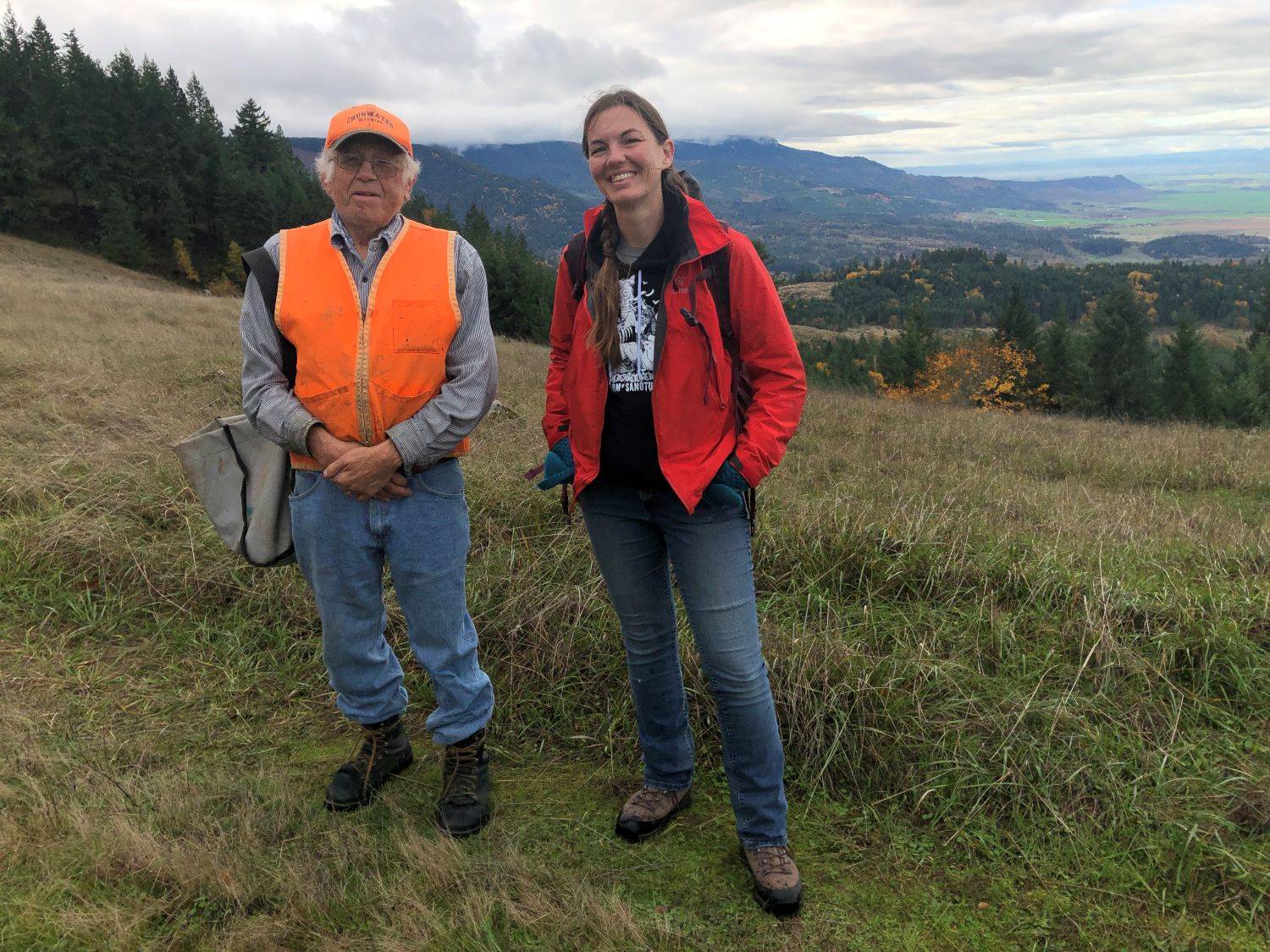
Working Together, Caring Together
By Celeste Lebo
November 2021
“Here we are, at the top of the world,” Jim announces as we arrive at the summit of the largest meadow on his property. Our view: the quilted green expanse of the Willamette Valley of Oregon.
Jim Merzenich, private landowner and tree farmer, began stewarding the site, now known as Oak Basin, in 1992, when he and his brother, Ed, first began purchasing land in the area.
Jessica Celis has also joined us for the day. In 2020, Jessica left her position as a restoration ecologist with the Institute for Applied Ecology (IAE) to become the botanist for the Bureau of Land Management (BLM) Upper Willamette Field Office. She now helps guide our restoration work at Oak Basin.
Oak Basin is part of a larger complex of upland prairies, oak savannas, and oak woodland habitats in the Coburg Hills, east of I-5 between Brownsville and Eugene, Oregon (Pictured above: upland prairie habitat at Oak Basin). Occupying more than 60% of the Willamette Valley prior to 1850, these habitats have declined to less than 2% due to farming, grazing, urbanization, and forest expansion. Additionally, invasive plant species have displaced native plants and led to a decrease in the abundance and diversity of native plant species associated with prairies. Oak Basin supports Kincaid’s lupine (Lupinus oreganus), listed as threatened under the Endangered Species Act and first discovered at Oak Basin in 2004. In 2006, the first Fender’s blue butterfly (Icaricia icarioides fenderi), federally listed as endangered, was found at Oak Basin. Kincaid’s lupine is the primary food source for the butterflies during their caterpillar stage and is critical to their survival. Oak Basin is the only site in Linn County and only one of three sites where the two species exist in the Coburg Hills.
Over the last century, the prairie habitat at Oak Basin has decreased by 20% because of the expansion of conifer forest into the meadows. Our recent restoration efforts have focused on removing conifer trees to return the meadows to open habitat. Jim, Jessica, and I are spending the day marking trees to be cut or limbed to reclaim upland prairie habitat and to open up corridors between meadows to help Fender’s blue butterflies find Kincaid’s lupine patches throughout the site.
Besides Jim and his family, the BLM, The Nature Conservancy, U.S. Fish and Wildlife Service, Calapooia Watershed Council, and now IAE have been involved in the stewardship of Oak Basin. When I ask Jessica Celis what it is like to still work at the site, she shares, “While leaving IAE was a tough choice, I took great comfort in the fact that my new role would allow me to continue working with great partners like Jim and on such important projects like the restoration work at Oak Basin.”
Over the years, each of us, in our turn, has done our small part to help restore and protect the upland prairies at Oak Basin. As Jim says, “Every day feels like Monday when there is so much work to do, but we love every minute of it!”
Many thanks to the BLM Upper Willamette Field Office for funding our work at Oak Basin.
Restoration
Research
Education
Get Involved
Contact
Main Office:
4950 SW Hout Street
Corvallis, OR 97333-9598
541-753-3099
info@appliedeco.org
Southwest Office:
1202 Parkway Dr. Suite B
Santa Fe, NM 87507
(505) 490-4910
swprogram@appliedeco.org
© 2025 Institute for Applied Ecology | Privacy Policy


